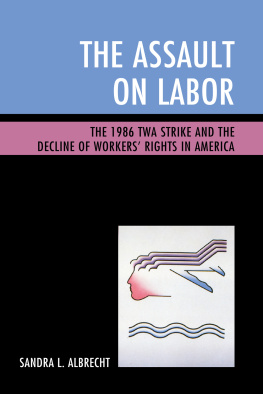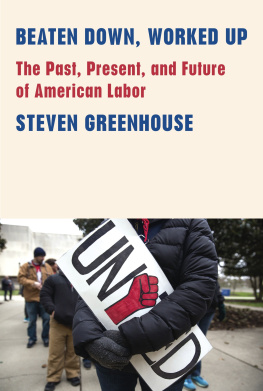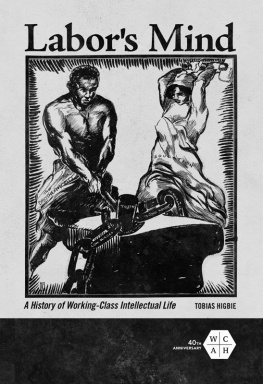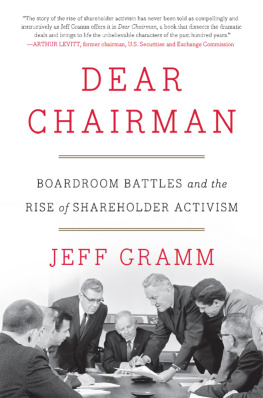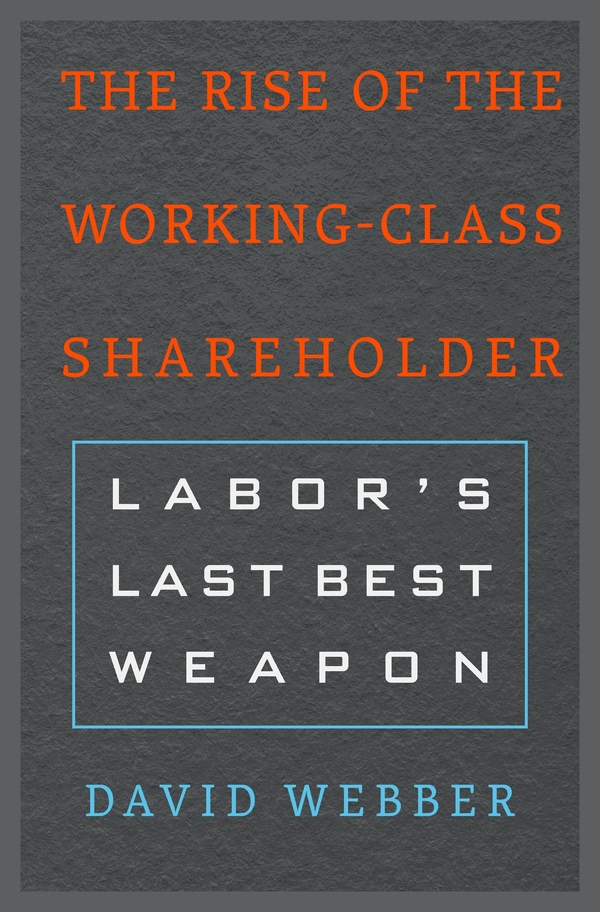Contents
Guide
Pagebreaks of the print version
The Rise of the
Working-Class Shareholder
LABORS LAST BEST WEAPON
David Webber


Cambridge, Massachusetts
London, England
2018
Copyright 2018 by David Webber
All rights reserved
978-0-674-97213-1 (alk. paper)
978-0-674-91947-1 (EPUB)
978-0-674-91945-7 (MOBI)
978-0-674-91946-4 (PDF)
The Library of Congress has cataloged the printed edition as follows:
Names: Webber, David (David H.), author.
Title: The rise of the working-class shareholder : labors last best weapon / David Webber.
Description: Cambridge, Massachusetts : Harvard University Press, 2018. | Includes bibliographical references and index.
Identifiers: LCCN 2017045239
Subjects: LCSH: Pension trustsInvestmentsUnited States. | Working classUnited StatesEconomic conditions21st century. | StockholdersPolitical activityUnited States. | Labor economicsUnited States. | Industrial relationsUnited States. | Labor unionsUnited States.
Classification: LCC HD7105.35.U6 W43 2018 | DDC 331.25/ 240973dc23
LC record available at https://lccn.loc.gov/2017045239
For Irit
Then Saul dressed David in his own tunic. He put a coat of armor on him and a bronze helmet on his head. David fastened on his sword over the tunic and tried walking around, because he was not used to them.
I cannot go in these, he said to Saul, because I am not used to them. So he took them off. Then he took his staff in his hand, chose five smooth stones from the stream, put them in the pouch of his shepherds bag and, with his sling in his hand, approached the Philistine.
1 Samuel 17:3840 (NIV)
Contents
Organized labor in America has never been closer to extinction. In the 1960s, more than one-third of the American workforce was unionized. Today, that number has dropped to 10 percent, mostly concentrated in state and local government jobs. Loss of unionization has not only led to lower compensation and job security for workers but has weakened unions themselves. One-party control of the American government makes this grim picture even worse. As this book comes to press in 2018, the Republicans control the White House, the Senate, the House of Representatives, thirty-four governorships, thirty-four state senates, and thirty-two state house chambers. With the appointment of Justice Neil Gorsuch, the Supreme Courts majority is as conservative as ever and seems set to deliver sharp legal blows to unions. The political marginalization of the Democrats, labors traditional partner, has left labor exposed to unprecedented levels of political, legal, and economic attack.
In the face of this bleak backdrop, a group of ingenious, committed, and canny labor activists has quietly developed a formidable new source of power for labor: shareholder activism. These activists have taken advantage of the only decisively positive trend affecting labor in recent decades: the massive growth of worker pension funds, which amount to somewhere between $3 and $6 trillion, depending on how one does the math. These pension fundssometimes called labors capitalare invested in corporations, hedge funds, and private equity funds. And they are a tremendous source of power for labor.
As this book shows, this pension fund power has been used in several different ways. Some of it has been employed to thwart self-serving and entrenched corporate managers and directors. Some has been used directly against hedge funds and private equity funds that take working-class shareholder money and direct it against workers interests. Some has been put to benefit labor directly: to fend off attacks on pensions, push back against job losses, and create jobsjobs that can strengthen pensions by increasing contributions to them. And some has been used to find common ground with other investors. These investors include anyone with a retirement account, as well as mutual funds, foundations, and socially responsible investors who may share labors long-term investment focus and sympathize with its broader social goals. This book tells the story of the activists who have fought for these developments, and the accompanying legal and political challenges they have faced.
What analysis of their activism reveals is that the power of labors capital operates along two dimensions: advancing workers interests as workers, and advancing workers interests as long-term shareholders saving for retirement. These interests are rarely considered together. They are studied in different parts of the academy, covered by different bodies of law, and serviced by different professionals and businesses who often show little awareness or understanding of the other dimension. On the rare occasion when these interests are discussed together, they are portrayed as being in conflict. Although thats sometimes true, they can also be highly compatible, and mutually reinforcing. Neither interest can be understood properly without reference to the other.
In addition to telling the stories of some of the activists who are looking out for workers interests, this book articulates a legal and policy framework for navigating this dual set of concerns. I offer a structure for assessing how workers should balance their interests in their jobs with their interests as pension fund investors in a way that best advances their economic well-being overall. Sometimes, that means directly promoting their interests as workers. Other times, it means directly advancing their interests as shareholders. Sometimes, it means finding common ground with other investors. And sometimes it means going it alone. To help guide workers through this maze, I propose a worker-centric legal and policy vision that provides for taking into account the full range of workers real interests when determining how their powerful pension funds make investment decisions.
Finally, I also explore the well-funded and forceful backlash against labors capital. In particular, the Koch brothers political advocacy group Americans for Prosperity and the Laura and John Arnold Foundation, among others, are funding pension reform efforts that are ostensibly aimed at solving an alleged pension crisis, one whose existence is debatable. These pension reform efforts, if fully implemented, will destroy labors ability to continue its shareholder activism. Just as unfavorable congressional legislation or an unfavorable Supreme Court decision could undercut unions themselves, these efforts by the Kochs, the Arnolds, and others could undercut labors pensions, undermining both worker retirement security and shareholder power. These efforts amount to a form of economic voter suppressiona reduction in the economic voice of working- and middle-class peopleparalleling voter suppression efforts in the political sphere. Still, there are reasons to remain optimistic that labors capital can withstand these challenges, not least because these funds are primarily concentrated in Democratic states and cities with large public sectors and relatively friendly politicians and laws.
It is ironic that much of what may survive of the labor movement in the twenty-first century is its capital. Labor is clearly going to have to adapt to an even more hostile legal and business environment in the near term. There are many calls for reconstituting labor in newer, more sustainable forms, forms that are better adapted to the twenty-first-century workplace. Recent activist campaigns, like the Fight for $15, a movement for a sustainable minimum wage, are examples of the kinds of street power in which labor must continue to invest. Other policy initiatives, like a universal basic income, should be explored. But these initiatives are not enough. While the future of the American labor movement cannot be built on shareholder activism alone, it cannot be built without it. The reason for that is simple. For far too long, labor and its progressive sympathizers have sought to transform the market from outside the market: from courts, from legislatures, from regulators, from street protests, from strikes. These tools are important. But ultimately, it is not possible to transform the market from the outside. It must be transformed from within.



